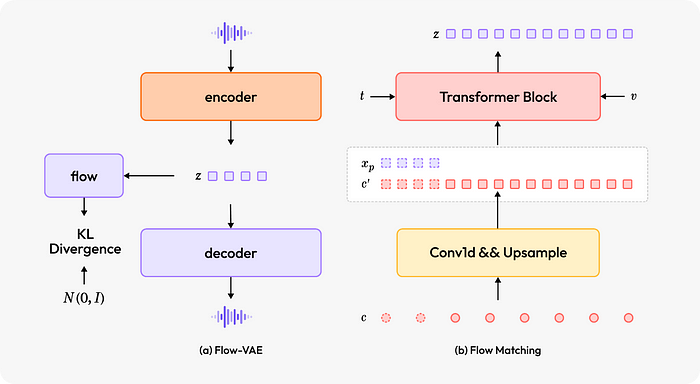Text-to-speech technology has advanced dramatically in recent years, but most systems still face limitations when cloning voices without extensive training data. represents a significant step forward because it offers true zero-shot voice cloning that doesn’t require transcribed reference audio.
Innovations That Set MiniMax-Speech Apart
Two key innovations make MiniMax-Speech stand out from existing text-to-speech systems:
-
A learnable speaker encoder that captures voice characteristics from untranscribed audio, enabling true zero-shot voice cloning
-
Flow-VAE architecture that enhances audio quality and speaker similarity by improving information representation
Unlike other models that claim “zero-shot” capabilities but actually require paired text-audio examples (), MiniMax-Speech can generate high-quality speech in a target voice using only an untranscribed audio sample.
True Zero-Shot Voice Cloning
MiniMax-Speech employs an autoregressive Transformer architecture similar to those used in large language models. The key difference is its speaker encoder, which extracts timbre and vocal style from reference audio without needing any transcription.
The speaker encoder is jointly trained with the autoregressive model, unlike systems that use pre-trained speaker verification models. This joint training allows the encoder to better capture the specific characteristics needed for high-quality speech synthesis.
This approach offers several advantages:
-
No transcription needed for reference audio
-
Cross-lingual synthesis capabilities
-
More natural prosody as the model isn’t constrained by prompt examples
-
Flexible voice cloning across 32 languages
While MiniMax-Speech supports both zero-shot and one-shot cloning, its zero-shot capabilities are what truly distinguish it from other systems like , which require paired text-audio samples for speaker conditioning.
Enhancing Audio Quality with Flow-VAE
The second major innovation in MiniMax-Speech is its Flow-VAE architecture, which significantly improves audio quality.
